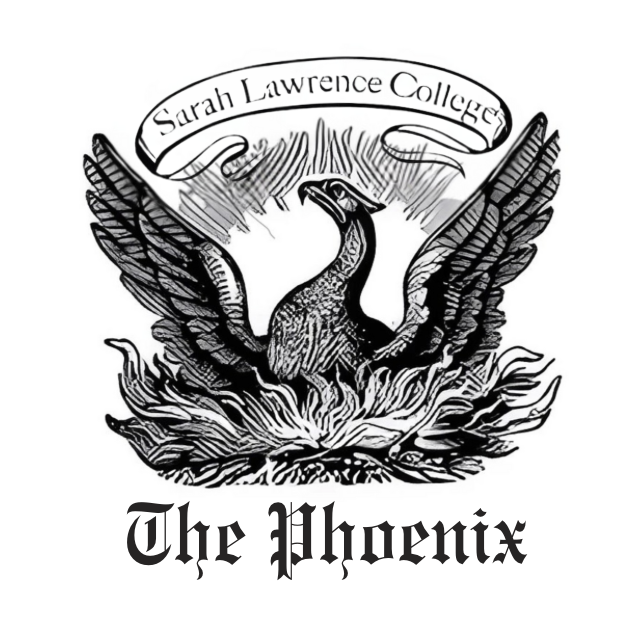Op-ed: Not all members of the magical community are the same
Breanna Northrup '16 posed for Isabel Farrington '14 in an October shoot for SLCSpeaks
I have been a practicing witch for seven years. I am often met with left field questions from people. They ask if I really am a witch, or inform me that they have a “Wiccan” second cousin, even though I am not Wiccan. Normally, my response to the average witching question is to bore the poor soul with a weighty lecture on the history and practice of witchcraft. The world of magic is not some big, arcane secret and it certainly amounts to more than the content of my usual dry dissertation. To foster Sarah Lawrence’s greater understanding of magical culture, I have compiled the pecking order and brief history of a few major traditions, and what they think of each other. I hope this will facilitate an understanding of the distinctions and attitudes within the magical community.
The Voodoo religion is fertile ground for us to begin, because it is so rarely criticized by other traditions. Having next to nothing to do with Hollywood’s horror films of the 80s, Voodoo is a legitimate religion of West Africa that was brought over and changed by the Slave Trade in Mesoamerica. What has made this tradition so unapproachable is largely due to laziness and white guilt regarding the slave trade. Even other members of the magical community are often too recognizant of the inhumane reasons Voodoo was brought to the US to even think of criticizing it. Most Voodooists (Vodouisants) do not have much to say publically about other western occult traditions either, except for Hoodoo, a form of (African)-American folk magic. The two are frequently confused, charging Voodooists with a need to explain their differences. In America, a lot of Vodouisants also do Hoodoo, because the two traditions share a lot of practical similarities, but not everyone who believes in Voodoo is also a magician.
Hoodoo practitioners will often look at Wiccans and Neo-wiccans interchangeably, seeing the whole mass as a bunch of “love-and-light” flower children. However, if they were to run into a Goetic magician at the bar, the average Hoodoo practitioner would mumble something like, “Damn white people, getting involved in stuff they can not handle.” For those of you who are sane enough not to know, Goetic magicians are ceremonialists who work with medieval and early-modern grimoires (magical handbooks) to commune with the oogly-booglies of the Christian underworld, also known as demons!
While Hoodoo workers seem to get along well with Traditional Witches, Traditional Witches definitely do not think too highly of many other traditions. They rarely seem to mind Traditional Wiccans (anyone closely related to the original Gardnerian or Alexandrian covens), though criticize them for being too moralistic. Interactions of Traditional Witches with Neo-wiccans are notoriously rude, and demeaning. Traditional Witches usually consider Neo-wiccans uneducated and unrealistic.
Similar to the Traditional Witches, Wiccans are known to patronize Neo-wiccans, largely because Neo-Wiccans consistently call themselves Wiccans, which undermines the thorough training and initiation that true Wicca endure. Whether it is ignorance or laziness is difficult to say, but the politically minded Wiccans will rarely voice their frustrations.
Neo-Wiccans—of course, I am generalizing here—who meet a Traditional Witch will often start screaming about Karma and the ‘Rule of Three’, not understanding how a witch could ever curse somebody. Throw them a Neo-Druid and they will be giddy as a hell. “You know, I was Morgan le Fay in a past life!” Literally, these are words that are spoken consistently.
Gnostics tend to be a rather non-judgmental bunch. Their theology doesn’t involve itself much with the fussy rituals of ceremonialist magicians and witches, preferring instead to transcend such physical limitations. Get a Gnostic together with an Alchemist, Luciferian, Chaote, or Kabalist and they will start singing, “Hey, brothers, let’s go down!”
While this long list of terms may leave you a little lost, I hope you take away two things from this: firstly, there is not just one kind of witch, magician, or pagan. The amount of traditions I did not mention is exponentially larger than the few I did. Secondly, we are not a peace-loving, poetry-reading flock of bohemians. We have a dynamic modern culture; and it is kind of a ‘witch’ to be a part of.
by Zac Zimmerman '16
zzimmerman@gm.slc.edu
Top photo appears courtesy SLCSpeaks. Read the piece and see the full shoot here.
Shot by Isabel Farrington '14
ifarrington@gm.slc.edu
isabelfarrington.com.
Styled by James Neiley '14
jneiley@gm.slc.edu
niftytown.tumblr.com


